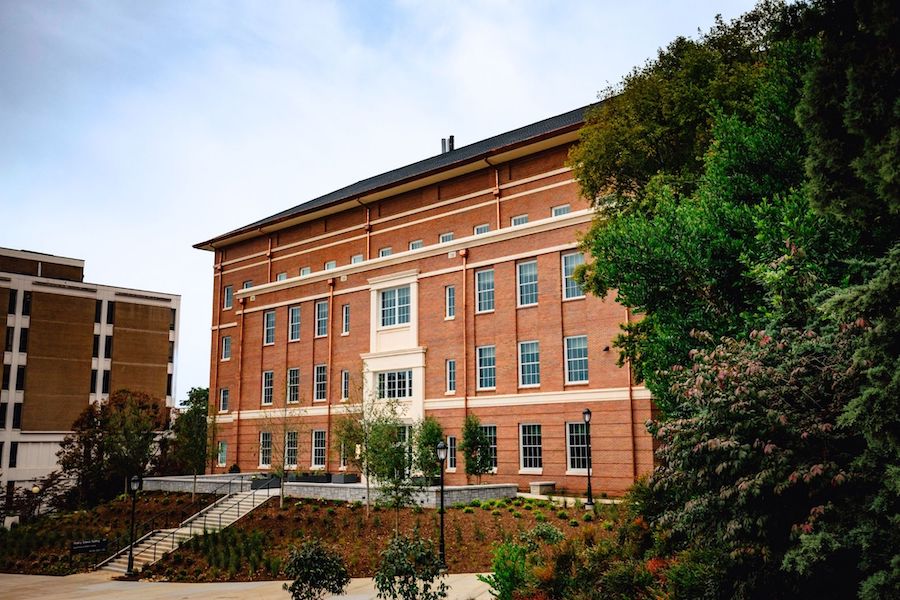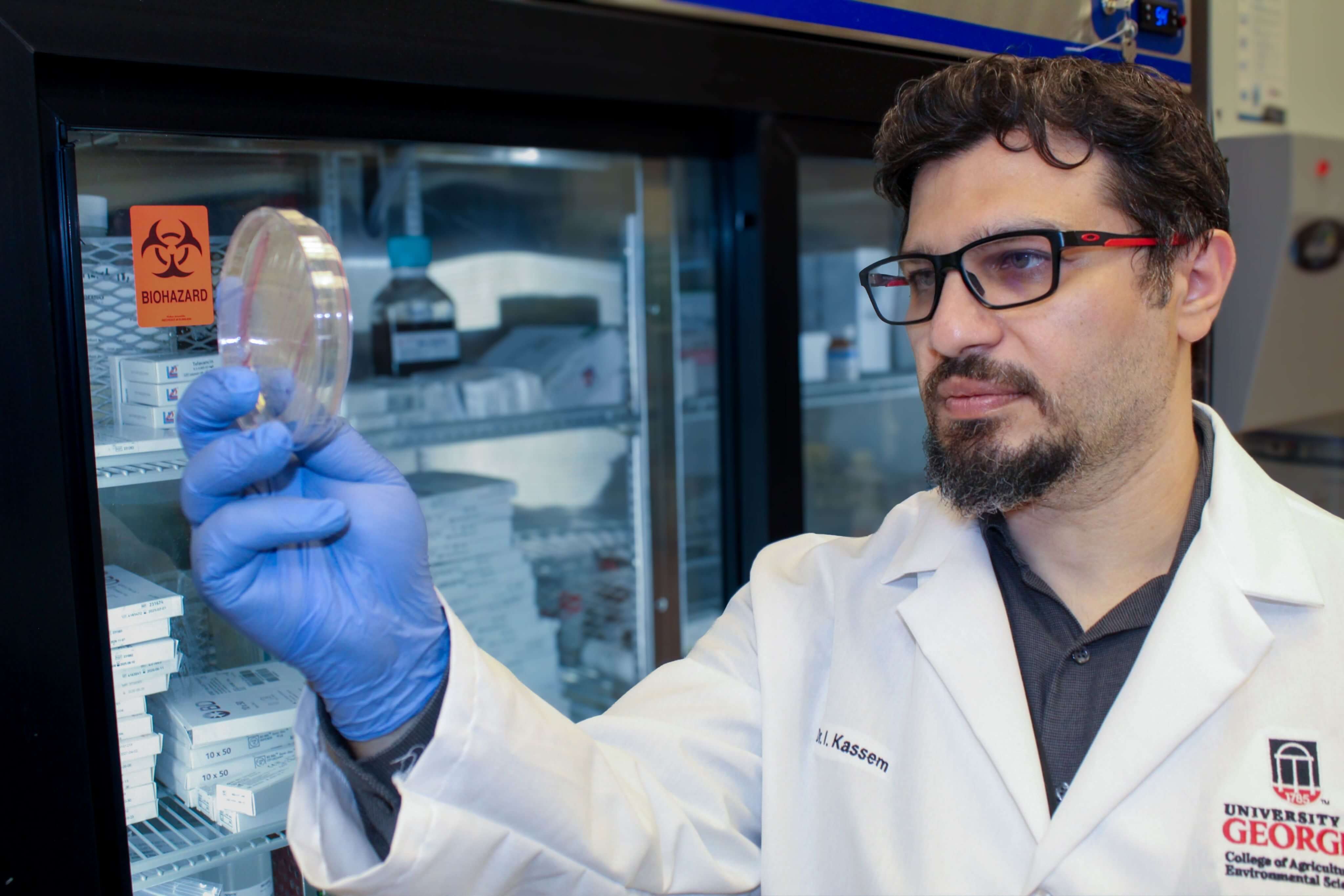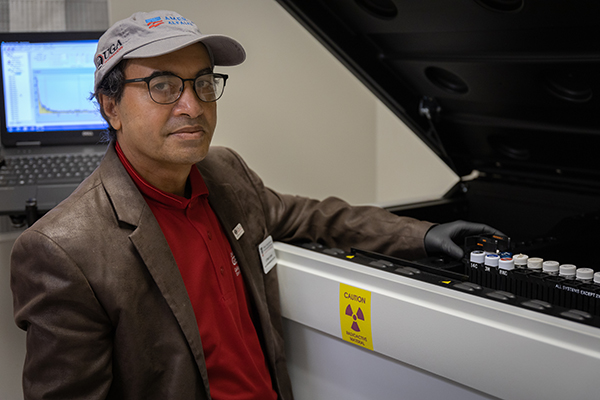
University of Georgia Cooperative Extension’s radon testing program — a holistic program that combines radon education outreach with research, testing and mitigation — has helped optimize sampling and testing methodology for radon in water throughout the U.S. The program has influenced national standards in radon testing.
Pamela Turner, professor and Extension housing and indoor environment specialist with the College of Family and Consumer Sciences, is the primary investigator on the project with co-PI Uttam Saha, coordinator of UGA’s Agricultural and Environmental Services Laboratories (AESL) Feed and Environmental Water Laboratory. The team receives funding for this program through an ongoing State Indoor Radon Grant (SIRG) from the U.S. Environmental Protection Agency (EPA).
“Our team has come up with a method of sample processing for radon in water that has contributed to developing and adopting national standards in this field,” said Saha, who manages radon in water testing and education in Georgia and some neighboring states in the Southeastern U.S.
Environmental risk
Radon is a radioactive gas that is released by the decay of uranium from uranium-bearing rocks and minerals, which are common in the bedrock on which approximately half of Georgia sits.
Uranium is continuously undergoing a slow decay process. Uranium decays into radium, which has a 1,600-year half-life — the period required for one-half of the atomic nuclei of a radioactive sample to decay. But radium decays into radon, which has a very short half-life of 3.82 days.
The shorter the half-life, the more radioactive the element becomes, which is why radon is damaging to humans and can cause cancer, Saha said.
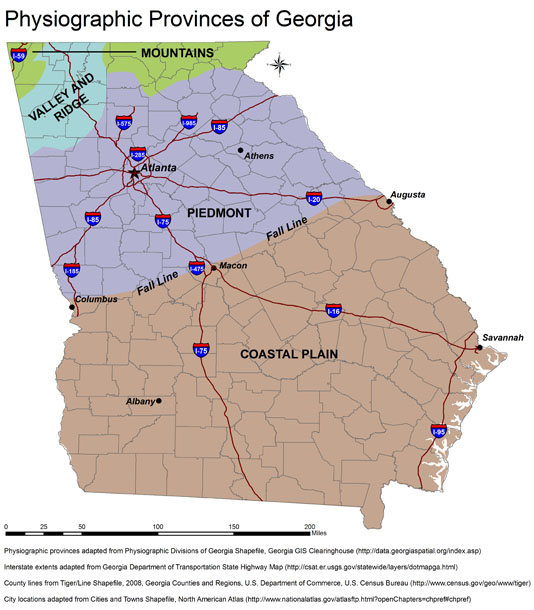
“When we inhale radon, the decay process within the body creates alpha particles, which have two protons and two neutrons bound together and damage the soft tissues in the body,” Saha said. This damage can cause mutations that can potentially lead to cancer.
Each year, there are 21,000 radon-related cancer deaths in the U.S. And Georgia has one of the highest rates of radon-related cancer deaths in the region at about 820 per year. The areas of the state at the highest risk for radon are located above Georgia's Fall Line — a 20-mile-wide line across middle Georgia from Columbus to Augusta that marks the dividing line where the hard, crystalline rocks of the Piedmont region meet the softer, sedimentary rocks of the Coastal Plain, according to the New Georgia Encyclopedia.
“Any area below the Fall Line has a relatively lower risk of radon, and anyone above that line has a much higher risk,” Saha said. “Given that this is a pressing public health issue that causes a significant number of deaths, and because the cost of handling those illnesses is enormous, the EPA created the State Indoor Radon Grants Program to fund programs like this one at UGA and similar ones in other states.”
The presence of radon in the air or water is not a reason for panic, Saha said.
“We have been serving the people of Georgia for this issue for many years and we want them to understand that, if there is a problem, there is a good solution for removing and staying free from radon,” he said.
Radon can be mitigated by professionals who are certified through the National Radon Proficiency Program (NRPP). And a a nonprofit professional association, the American Association of Radon Scientists and Technologists (AARST), is “dedicated to the highest standard of excellence and the ethical performance of radon measurement, mitigation, and transfer of information for the benefit of members, consumers, and the public at large.”
UGA’s program is gathering data through radon testing in the state and updating Georgia’s radon risk map.
“In general, the risk of radon indicated in the existing EPA map is underestimated to some degree based on new and extensive data we have been continuously gathering,” Saha said.
Discovering a radon hot spot
Through its routine water testing program, AESL began documenting high levels of uranium in Monroe County water sources in 2011, spurring an intensive testing and mitigation effort in the area. The AESL’s strong involvement in uranium testing, public education and mitigation efforts convinced EPA to allocate special funding, which made it possible to purchase the instrumentation needed to start a lab for testing radon in water.
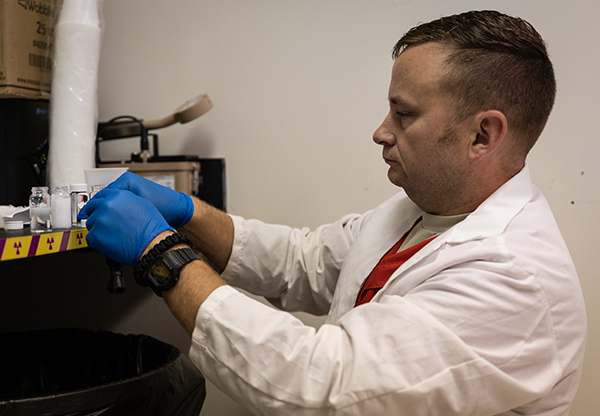
“We had a lot of questions to answer about how to collect and process samples because radon dissolved in water can escape very easily, and underestimating radon levels can be common” Saha said.
Saha began exploring what work was being done in the field of measuring radon in water and connected with Michael Kitto, a colleague in the New York State Department of Health, on how to test for radon in water in a way that would minimize the risk of underestimation while protecting lab personnel from radiation exposure.
After conducting systematic and comprehensive research, together they wrote and published a paper, “Optimizing Sampling, Sample Processing and Analysis Methods for Radon in Water by Liquid Scintillation Counting,” in the American Journal of Analytical Chemistry, along with two other papers presented in the proceedings of the AARST International Radon Symposia.
Those findings drew the AARST's attention to the need for developing a national standard for sampling, collection, processing and analysis of radon in water by a national committee. Saha served on the laboratory section of the committee and the work done at UGA was discussed and considered by the committee for inclusion in the national standard that has now been officially adopted by the AARST.
Now the radon testing program at the AESL receives testing samples from four neighboring states — South Carolina, Florida, Alabama and Tennessee — as well as occasional samples from northern states.
“We have the ability to do it and we can grow as a regional service center for this,” Saha said.
Advancing the science
AESL has also been working to develop a proficiency test for facilities that provide testing for radon in water — a requirement by accrediting agencies — which was thought to be impossible because, as a dissolved gas, it is not stable enough to produce a testable sample because of the magnitude of loss of gas from the water can be random.
Using five years of evidence, Saha will present a session at the 2021 International Radon and Vapor Intrusion Symposium in October on “Long-term evaluation of a reusable radon-in-water proficiency test.”
Saha and Kitto have collaborated on the project since 2015, when Kitto visited the UGA labs and shared his previous research in this area using radium as source of radon.
“For a long time, radon scientists thought it might be difficult, if not impossible, to have a proficiency test for radon in water. We now have five-year data that would show that a proficiency test for radon in water is indeed possible,” Saha said.
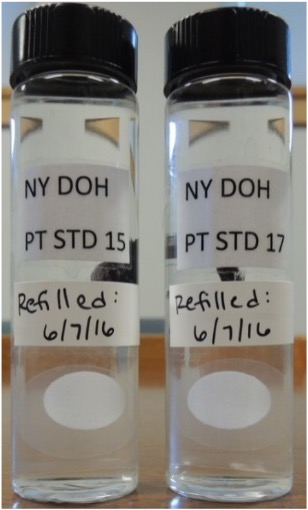
Saha said this research will contribute to the coordinated national effort to create a proficiency test for all labs that are performing high-quality water analysis in this area.
“Everything we do has cost or health consequences on the people who are seeking these laboratories’ testing,” Saha said, adding that in Georgia alone there are approximately 680,000 families — or about 1.9 million people — who get their drinking water from private wells and the research being done on radon detection in water is important to their health. “If you look at the EPA map, you will see many states are affected by radon, like North Dakota and other states, and it is important that we educate people of this significant health risk and of the solutions available.”
Protecting residents
Because private wells are not regulated by any environmental or governmental body, it is the responsibility of property owners to have their water tested and ensure that it is safe for drinking.
Traditionally, radon in water is mitigated through two methods — aeration and activated carbon filtering — however both methods have limitations. The new AirwellTM technology removes radon from water in the well before it enters the home.
The team recently received additional Multipurpose Grant (MPG) funding from EPA which will allow the team to set up an ongoing demonstration of AirwellTM technology to mitigate very high levels of radon in water in two homeowner wells in Walton County. The UGA team, including Walton County Extension Coordinator Joel Burnsed, will monitor the mitigation technology for two years, studying the sustainability of the mitigation performance.
“We are shooting to mitigate very high levels of radon in water and to keep mitigating it in a sustainable manner for a long period of time,” Saha said.
Operated under UGA Extension, AESL processes more than 92,000 samples per year, including plant tissue, soil, feeds and forages, and water samples, on a fee-for-service basis.
Working with Extension agents in county offices, which provide sampling materials and training to property owners and residents, AESL receives and processes the sample before creating reports that are sent to the county offices for results and recommendations to be presented to the clients.
For more information or to order a testing kit, visit extension.uga.edu/radon-testing.





